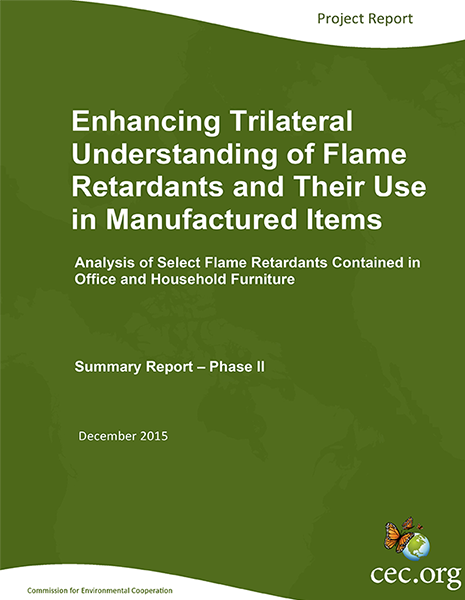Enhancing Trilateral Understanding of Flame Retardants and Their Use in Manufactured Items
Phase II - Analysis of Select Flame Retardants Contained in Office and Household Furniture
Enhancing Trilateral Understanding of Flame Retardants and Their Use in Manufactured Items
Phase II - Analysis of Select Flame Retardants Contained in Office and Household Furniture
Description
Canada, Mexico, and the United States, in their roles as Parties to the Commission for Environmental Cooperation (CEC), have taken a common interest in carrying out a case study to better understand the presence of 16 emerging flame retardants in consumer products. As a result, a project entitled Enhancing Trilateral Understanding of Flame Retardants and Their Use in Manufactured Items (CEC 2014) is being supported under the CEC’s Operational Plan 2013–2014, through a project team consisting of representative members from the CEC Secretariat, Health Canada (HC), Environment Canada (EC), Instituto Nacional de Ecología y Cambio Climático (INECC) under the Secretaría de Medio Ambiente y Recursos Naturales (Semarnat), and the United States Environmental Protection Agency (EPA).
The results of Phase 2 of this project are discussed in this report. These results cover the targeted product sampling and analysis of a select list of emerging flame regardants. Phase 2 was carried out in two parts: 1) a screening technique was used to determine the presence of bromine, chlorine, and phosphorus, elements which could indicate the presence of one of the 16 flame retardants of interest, and 2) a quantitative analysis of samples taken from the products was performed. The results of the XRF screening and GC/MS laboratory analyses are discussed in terms of general trends across product type, sample category, and country.
Additional Information

